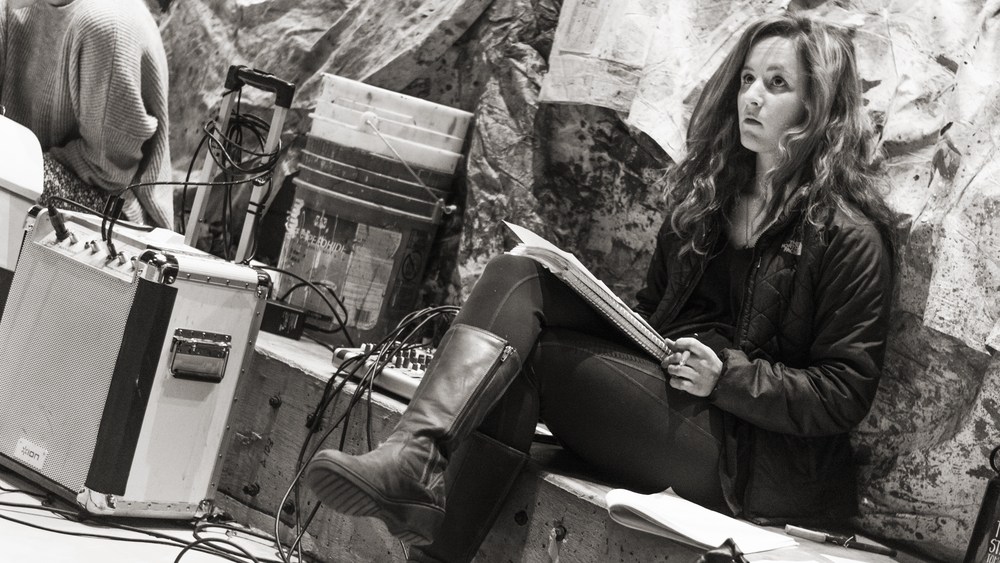
Photo: Dante Haughton ’19
By: Allyson Schult ’17, Assistant Stage Manager
When I first got on board with the Hecuba project, I had no idea what the process would require. I was as green as you could get—untried as an ASM, and still fairly new to the world of theatre production in general. But, Stage Manager Kendall Gross ’16 was more than willing to take me on, and I soon realized that we were all a little in the dark, as Ian’s approach to creating Hecuba was entirely unique and unrepeatable.
From day one, Ian Belton worked hard to craft a strong relationship between every member in the company. We spent many months working on scenes, and Ian had the cast members do
“dream work,” where they were asked to keep a journal and write down whatever they could remember dreaming about the night before. Not only did the cast share their dreams with one another, but these dreams were then staged and performed as well. From fragments of dreams to completed stories, actors worked with the AD’s and ASM’s to create a small scene of the dream onstage. Ian made sure to approach all of the projects he presented to the cast with this same vigor and energy, and it proved helpful throughout the entire process. This same energy carried over into the actors, and allowed them the freedom to explore and play with both Hecuba texts we worked with.
For much of our rehearsal process, the actors were kept in the dark on not only what character they would be playing, but on the Marina Carr script as well. Before anyone got to see the Carr script, Ian had us stage and perform Anne Carson’s version of Hecuba, which is a direct translation of the original play. Will Clark ‘16 (Odysseus) reflects on this experience, saying:
“The Hecuba process has been very rich and rewarding artistically. Ian has done a tremendous job of giving each actor a stepping-stone into the text. Much of the work during rehearsals has focused on each actor finding ‘drop-in points’ for a certain point of the Hecuba text. Each actor or actress focuses on a point in his or her life that may be tangentially related to the play in some capacity, and then the play scene and the actor’s thoughts are merged until the scene and its text take on a vivid, lifelike relevance for the actor.”
It wasn’t until a month out from opening that the cast received a copy of Marina Carr’s Hecuba at all. While getting the text late into the rehearsal process may appear like a potential source of stress for the cast, they came to realize how rewarding and freeing this could be. As stated by Molly Burdick ‘17 (Cassandra): “Spending so much time on the Carson made the Carr just another thing on our list and we attacked it with the same vivacity, so it didn’t make us feel rushed or nervous.”
By having the freedom to explore and treat the Carr script as just another assignment, many extra elements of the show were be discovered. Unlike the Carson Script, Marina Carr’s version of Hecuba doesn’t have a chorus. Therefore, some aspects of the choral and group work seen in the final performance was developed when working with the Carson script instead.
Through numerous high and low points, every stage of the Hecuba process provided those involved with many new challenges and discoveries. From dream work to staging and performing two different scripts, Ian pushed the cast and crew to the edge. The Hecuba performance the audience gets to see is an assortment of unplanned discoveries, and creative and communal exploration. Will Clark says it best: “The work has been demanding, rewarding, and inspiring!”
Back to Main Article
